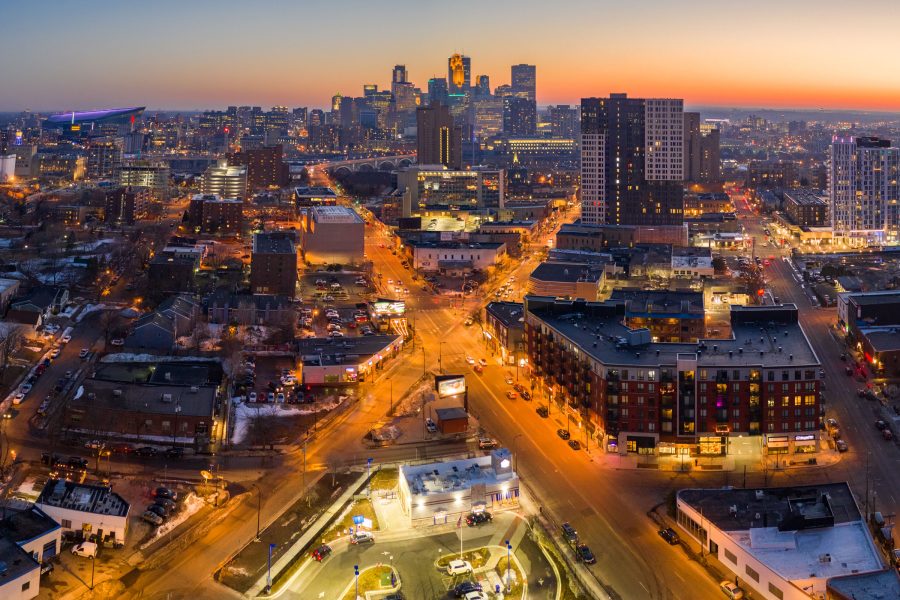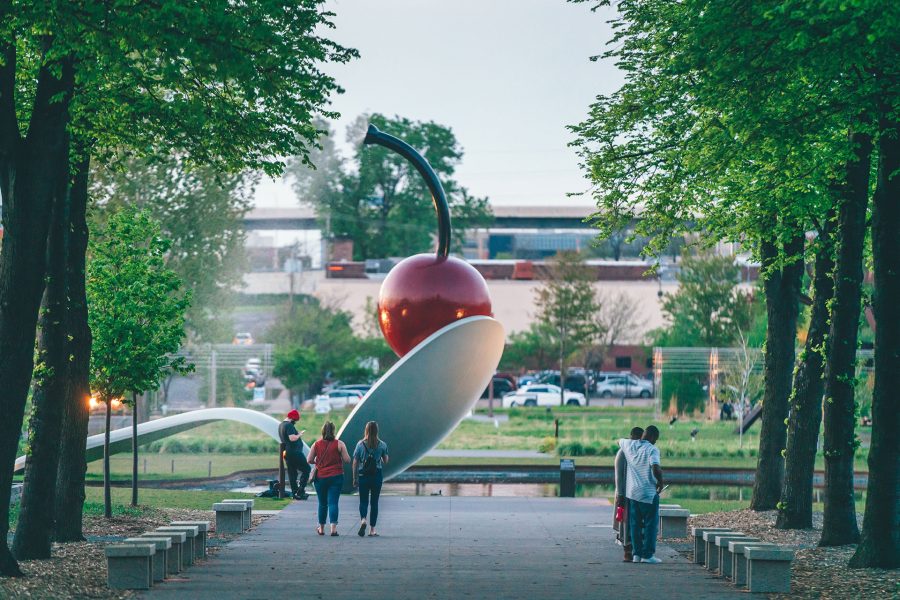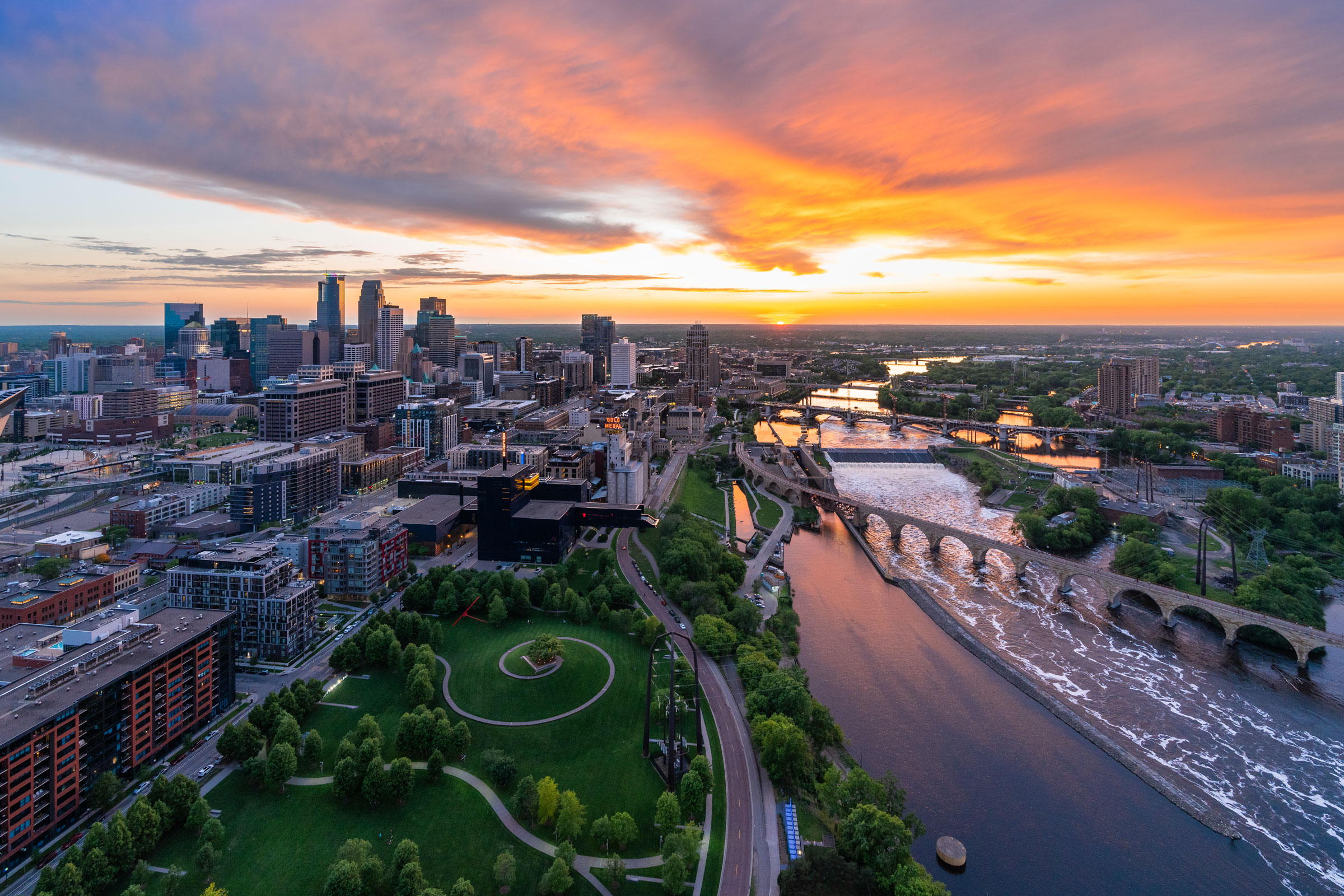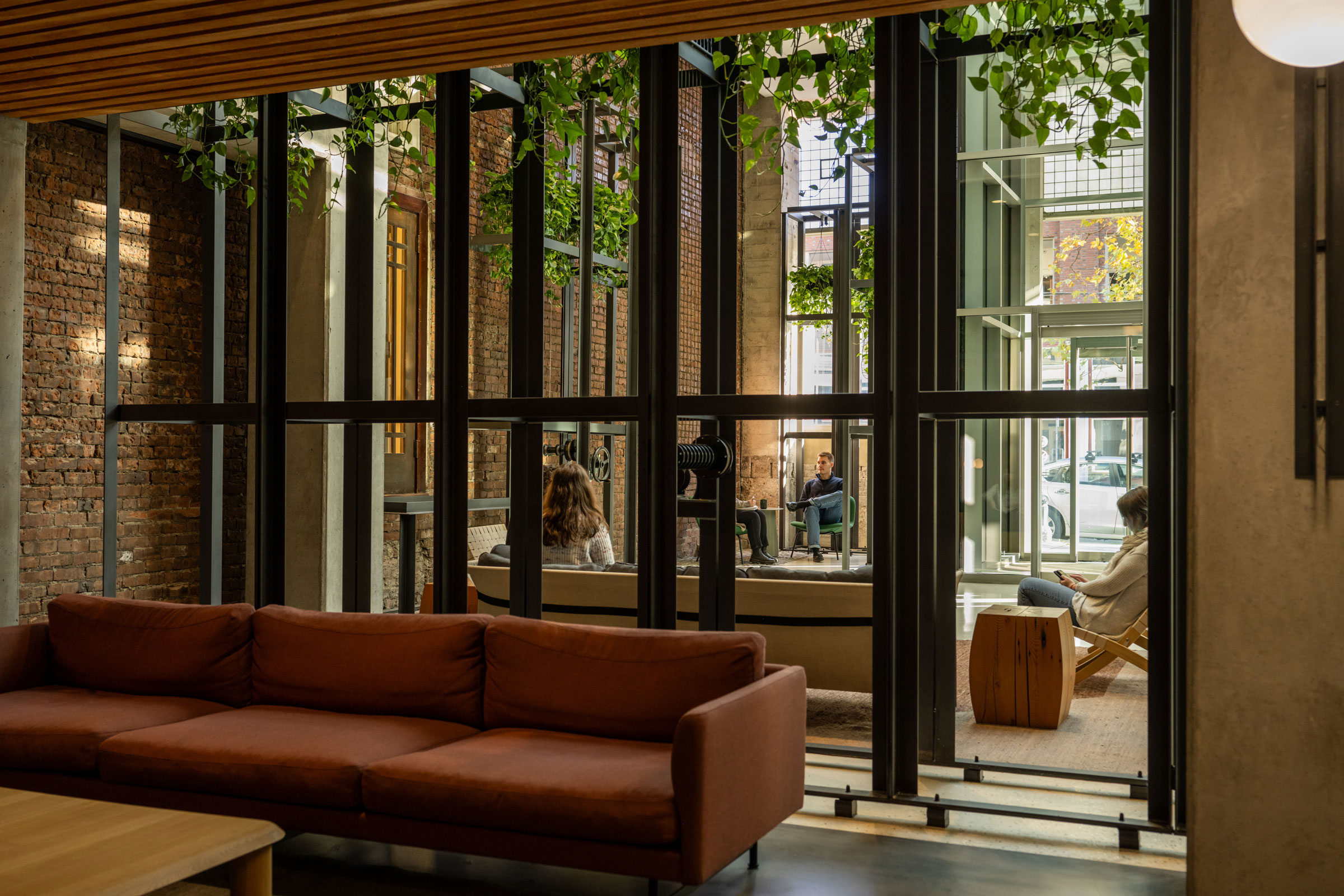Story at a glance:
- Minneapolis is one of the greenest cities in the US, with plentiful parks and lakes and a commitment to building community for all.
- Read about some of the area’s recent sustainable success with more stories on the Minneapolis Park Board, Graco Park, Sheraton Minneapolis Downtown, Pillsbury Creative Commons, and more.
Living near green space and lakes is standard in Minneapolis. This city of some 421,000 residents is home to thousands of acres of parks and lakes, and officials there want to ensure access to nature is equitable, as well as provide access to safe, high-quality, energy-efficient homes and workplaces for all.
Minneapolis adopted its Climate Equity Plan in 2023 and was one of the first 10 cities in the US to write one, according to Megan Hoye, the city’s director of Climate Equity Action. She trained in architecture and design for five years before getting her master’s in energy, policy, and public engagement work. “We’re not just focusing on science-based targets for decarbonization but also looking at how we are going to center our most underserved or vulnerable communities in that work and make meaningful impacts for local residents,” she says.
We’re not just focusing on science-based targets for decarbonization but also looking at how we are going to center our most underserved or vulnerable communities in that work and make meaningful impacts for local residents.
The plan includes paying special attention to residents who have higher energy burdens in their homes, who have lower incomes, or who have been harmed through prior historic policies and programs at a local, state, or federal level. The work also includes protecting those most vulnerable to climate impacts and those with less control over their living spaces, like renters, Hoye says.
Minneapolis is committed to being carbon neutral community-wide by 2050. The city’s Climate Equity Plan has 10 focus areas—from water and green space to streets and transportation, including looking at transportation options that are clean and accessible.

Minneapolis is also working to launch a geothermal and water exchange study to look at the potential for those technologies community-wide and identify priority hubs where they could support that development in the city. This study will go out for bid before the end of 2025 and launch in early 2026. Photo by Lane Pelovsky, courtesy of Meet Minneapolis
The city shares guidance across residential, commercial, and industrial buildings for how they can make building envelope, electrical, and mechanical system improvements to save energy and reduce emissions. Programs like the city’s Green Cost Share Program help to fund new energy-saving technology projects across all building types. Isaac Evans manages the Green Cost Share program and sees a growing interest in sustainable development citywide—including in passive house and full electrification projects. He points to a small group of sustainable-minded designers, architects, and property developers in Minneapolis—the Sustainable Developers Collective—who are focused on efficiency for mid-size commercial and multifamily housing projects up to 20-unit properties, for example. “They’re trying to build to that net zero–ready or passive house standard,” he says.
We recently caught up with some of the team making improvements across the city to learn more about their achievements and what the future holds.

The Minneapolis Sculpture Garden is home to the iconic Spoonbridge and Cherry. Photo by Lane Pelovsky, courtesy of Meet Minneapolis
gb&d: How and why is Minneapolis committed to sustainable development?
Megan Hoye: We have very liberal politics in our city in general; pretty much everyone supports this. It’s more about how we are going to do it and how fast we are going to do it. Those are the debates.
The mayor also has a Mayor’s Climate Subcabinet that was reinforced with some new structure late last year. It’s an opportunity to bring information before the mayor and many city department leaders to talk about climate work and what’s needed to move things forward. That’s been a helpful tool as well. It’s a regular meeting update of “Here’s where we are, and here’s where we need to go.”
What challenges does the city face?
MH: In the shadow of Covid the challenge many cities in this country face is lower vacancy rates, especially in downtown office buildings where there are more people working from home. How do you continue to keep the tax base up and have a thriving economy and economic development in our community? There’s always that push and pull—how to keep the cost of living as low as possible but also strive for these sustainability goals.
We have the political will and the political support and backing to continue to drive this forward but in balance with these other realities. We also have a very sprawling suburban area; we’re a relatively mid-sized city compared to the extent of our suburbs, as opposed to say, Houston or Atlanta, which is the exact opposite—all one city. One thing we’re always cognizant of is how to coordinate with the cities around us so we’re working in unison or at least coordinating, because there’s that balance of keeping people in the city and keeping people attracted to the city and the cost of living in the city, but also, again, moving aggressively on these goals.
What is the Green Cost Share program?
MH: The Green Cost Share program can provide funding for energy-saving projects not yet started. This includes commercial, industrial, and residential buildings. Funds come in part from small fees on everyone’s gas and electric bills; it pairs with the unique Clean Energy Partnership we have with Xcel Energy and CenterPoint Energy. We were an early city in the country to use franchise fees in this way. Most of the funds that are going into the Green Cost Share come from that. It funds other programs and work as well.
What are some recent successful sustainability wins?
MH: One or two projects have gone fully electric. One is Firefly, a 12-unit apartment building in South Minneapolis. It’s all electric and offers a lot of passive solar. It has fruit trees on the property. Considering it’s one lot that would have had a single-family home or a duplex on it and now has 12 units, it’s in line with our goals around density.
Isaac Evans: That project is also enrolled in the 4d affordable housing program in the city, which means three of the 12 units are preserved as affordable housing for the next 10 years.
Another cluster of interesting projects is a collection of passive house projects that have gone through a collaboration between Urban Homeworks and Northside Home, including single-family affordable housing developers in the city.
Ourselves and CPED, our Community Planning Economic Development department, put funding into these projects as well. Nine are scheduled to be complete by end of year. These are all passive house, single-family homes in the city that are sold at an affordable level to residents to be homeowners.
How does sustainability look in Minneapolis’ future?
MH: We are looking to launch a geothermal and water exchange study to look at the potential for those technologies community-wide and identify priority hubs where we could support that development in our city. This study will go out for bid before the end of 2025 and launch in early 2026.
This will look at the various natural resources we have as well as existing infrastructure and building energy loads. This technical potential combined with other social and vulnerability factors will be used to help identify and recommend priority areas in the city where geothermal or water-exchange hubs could be integrated into new and existing buildings and development. This would help to reduce our reliance on natural gas as a community, some of our hardest to mitigate emissions in the city.
There is a lot of other exciting work underway. We have very strong rental property licensing and inspections programming out of our Regulatory Services department. We’ve been collaborating with them to identify things that are out of step with renter or landlord expectations and then highlighting for them some grant opportunities.
We’re also collaborating on a city building decarbonization roadmap with our own property services division that operates the buildings for the city itself—61 owned and managed properties.

The Mississippi River—the second longest river in the US and the fourth longest in the world—winds its way through Minneapolis. Photo by Lane Pelovsky, courtesy of Meet Minneapolis
What makes Minneapolis unique?
IE: We’re relatively unique in having incentives specific for developers looking to build to that higher standard. There are a few other cities or counties that have that, but for the type of city that Minneapolis is, we have a relatively unique situation there.
MH: We have a lot of green space and access to water in our city. The extent of the natural resources and the natural beauty in this city is very hard to find in the rest of the country.
We have more green space per capita than any city of this size, and we are always ranked first or second for the amount of bike paths and bikeability of our city. When people are looking for a sustainable, climate-conscious, resilient city, we deliver. We’re also prioritizing the planting of trees on public space and private property through the sale of trees. These are the types of programs that accentuate what people already love about our city.
We also have an extremely active advocacy community within the city in general but specifically around climate and environmental justice. They are very involved and bring a lot of expertise and passion to initiatives that are going on—and watchfulness, too. That really helps to provide a motive to a lot of what we’re doing.



